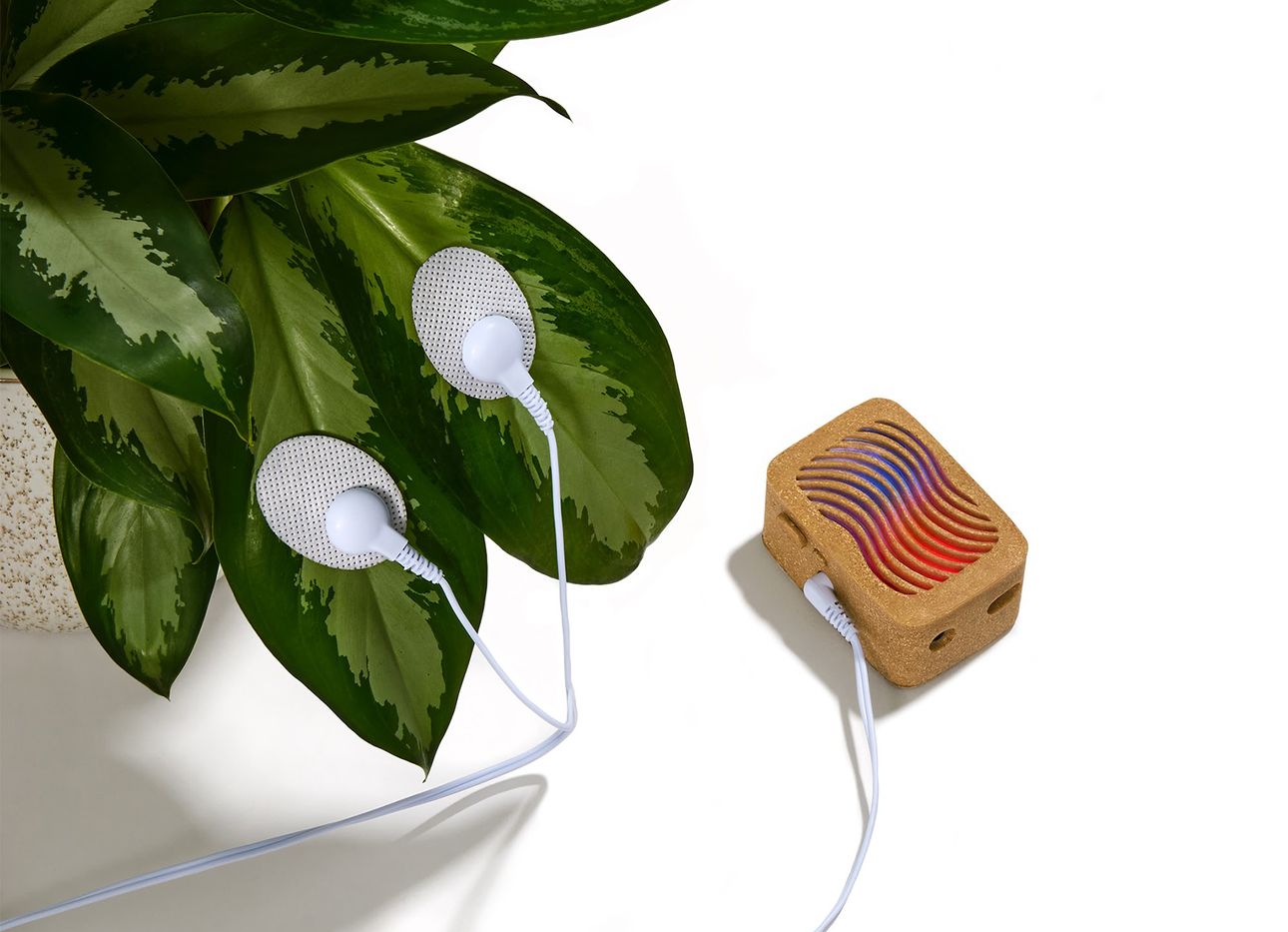
A User-Friendly Device That Creates Ambient Music With Plants
In his 1967 poem “All Watched Over by Machines of Loving Grace,” the late author Richard Brautigan, a mascot of ’60s counterculture, longed for “a cybernetic meadow / where mammals and computers / live together in mutually / programming harmony.” His words reflected a popular sentiment of his generation, who pollinated a field of musical experimentation with technology of the late 20th century, such as modular synthesizers and tape loops, and drew inspiration from the natural world. Many artists saw nature and the electronic as coexistent—even as having a symbiotic relationship.
The music they made was often inspired by, and sometimes created specifically for, plants. Canadian composer and electronic music pioneer Mort Garson’s beloved 1976 album Mother Earth’s Plantasia used the sweet, buoyant sound of a modular Moog synthesizer to make, according to the record’s subtitle, “warm earth music for plants … and the people that love them.” Elsewhere, in projects such as Hiroshi Yoshimura’s crystalline ambient album Green (1986) and Richard Lowenberg’s bio-sensing artworks—including one that translated bioelectric information from plants into a trippy video and live music score, and was featured in the video performance “The Secret Life of Plants” (1976), completed while Lowenberg was an artist-in-residence at NASA—artists explored new aural territory with foliage-focused songs.
Today, the community working at the intersection of plants and music continues to grow. Joe Patitucci and Alex Tyson, co-founders of the data-sonification system design company Data Garden, recently opened up the field to non-musicians by creating a device called PlantWave, which allows anyone to easily generate songs from greenery—no audio-engineering skills required. (More advanced users can, however, connect PlantWave with synthesizers or digital audio workstations.) It’s a project more than a decade in the making: Data Garden began in 2011 as a zero-waste record label that released music digitally via download codes on plantable pieces of paper embedded with flower seeds, a nod toward a similar initiative by Brautigan called “Please Plant This Book.” It also produced interactive exhibitions that considered the relationships between plants, music, and technology, such as a 2012 show at the Philadelphia Museum of Art, where the co-founders connected electrodes to plants and used an algorithm designed by Patitucci to transform them into melodic sounds.
Patitucci and Tyson collaborated with engineer Sam Cusumano to further adapt that technology and, in 2019, applied it to PlantWave, a palm-size block that senses electrical variations in a plant or fungus using two electrodes, which users place onto the organism’s surface. (The electrical current’s speed varies depending on how much water the plant is holding between the pair of nodes.) The variations are graphed as a sound wave, which is then translated into pitch messages that are played by PlantWave as notes from instruments including a flute, guitar, and harp; an app lets users select which instruments they want to hear. Other characteristics of the wave, such as a change in the speed of the current, automatically alter the texture of music through its tempo and intensity. Think of the levels of the plant-generated electrical currents as notes, and the changes of that current as fader knobs.
Patitucci engineered the device to put the data into a pentatonic scale; as such, the notes can be played in any arrangement and still sound harmonious. With only five notes—and with plants being relatively chill, so to speak—there isn’t much variation. But patience rewards. Like one’s eyes adjusting to the dark, the ear begins to hear the subtle variations as the plant music plays on. A mushroom in the Kealia Forest Reserve, for instance, initially sounds like a monotonous ringing note. After a few minutes, layers of rich, subtly undulating hums can be felt in the body. Applied to a basil plant, the device generates soft, repetitive flutes interspersed with the excitingly sporadic pull of a resinous bow across a cello string.
Each plant has its own organic pulsations (as forest ecologist Dr. Suzanne Simard suggests on Ep. 114 of our At a Distance podcast), and to hear them, one must remain open to perceiving them. PlantWave encourages active listening as a form of meditation, quieting the chatter of the mind to make space for a different language.